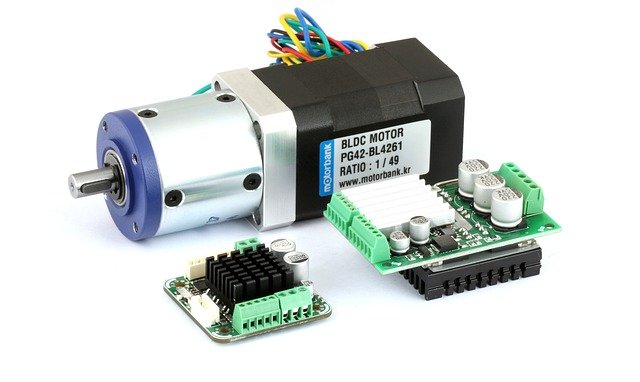How BLDC is different from normal dc motor?
A brushless DC motor (BLDC) is a type of DC motor that uses electronic commutation instead of a mechanical commutator to switch the current flowing through the windings. This allows for higher efficiency, longer lifespan, and improved performance compared to a traditional DC motor.

One key difference between a brushless DC motor and a traditional DC motor is the way in which the current is supplied to the windings. In a traditional DC motor, a mechanical commutator is used to switch the current flowing through the windings, while in a brushless DC motor, this switching is done electronically using an external controller.
Another difference between the two types of motors is their construction. A brushless DC motor typically has a permanent magnet rotor and a stator made up of several windings, while a traditional DC motor has a wound rotor and a stator with either permanent magnets or wound windings.
In terms of applications, brushless DC motors are commonly used in high-performance applications where efficiency and lifespan are important, such as in electric vehicles, drones, and industrial automation equipment. They are also commonly used in applications where the motor must be operated in harsh environments, as the lack of brushes reduces the risk of sparking and other mechanical failures.
Some advantages of brushless DC motors include their high efficiency, long lifespan, and improved performance. They are also typically smaller and lighter than traditional DC motors and can be easily controlled using an external controller.
However, brushless DC motors also have some disadvantages. They are typically more expensive than traditional DC motors and can be more complex to design and control. In addition, they require an external controller, which can add to the overall cost and complexity of the system.
BLDC vs Normal DC motor
| Brushless DC Motor | Traditional DC Motor | |
|---|---|---|
| Current switching method | Electronic | Mechanical |
| Construction | Permanent magnet rotor, stator windings | Wound rotor, the stator with permanent magnets, or wound windings |
| Applications | High-performance, harsh environments | General purpose |
| Efficiency | High | Moderate |
| Lifespan | Long | Short |
| Performance | Improved | Moderate |
| Size and weight | Small, light | Larger, heavier |
| Control | External controller | Brushes and commutator |
| Cost | High | Low |
| Complexity | High | Low |